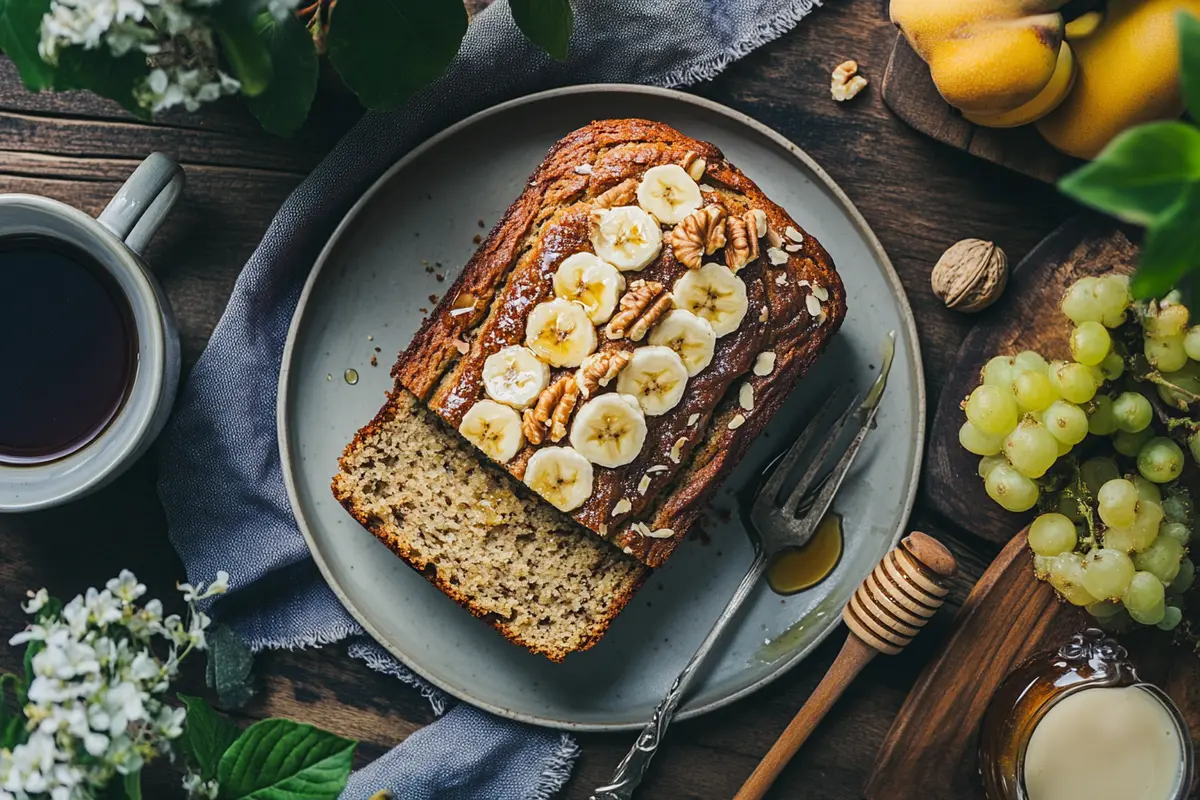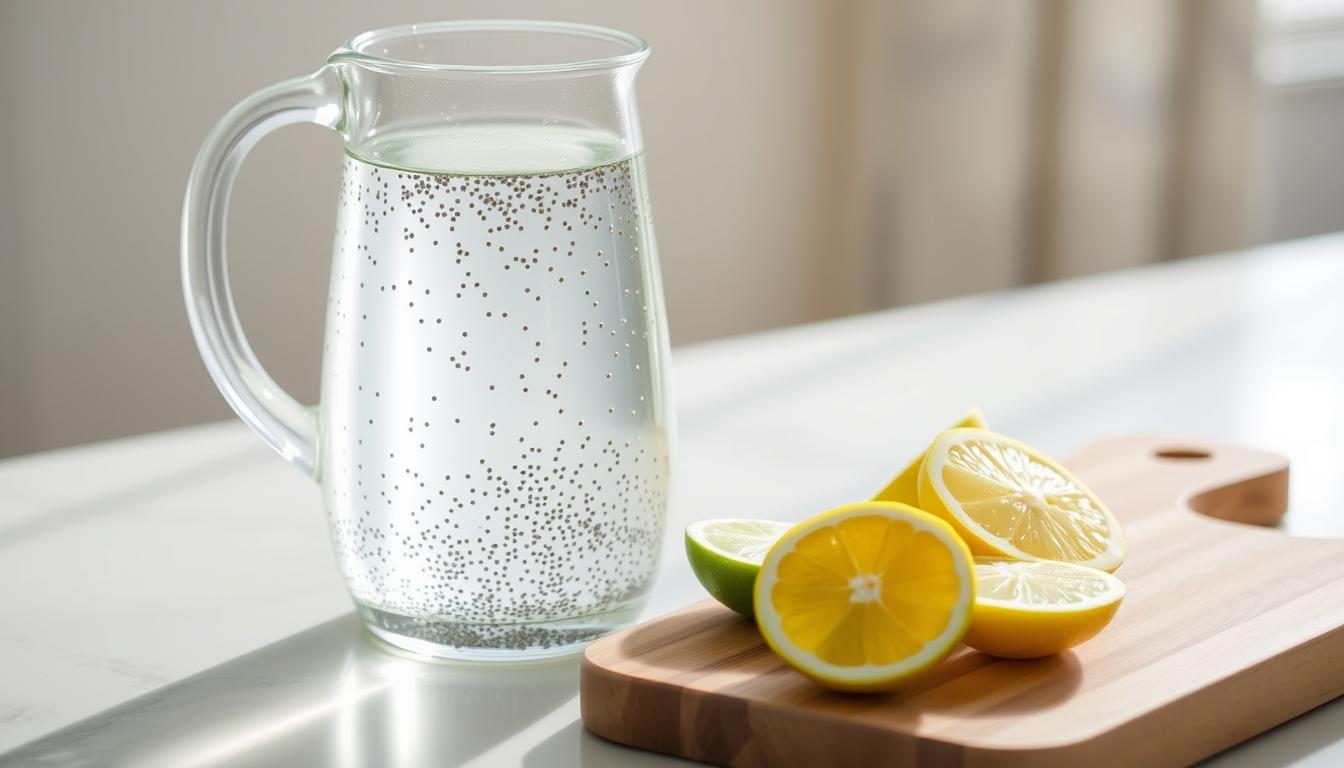Imagine the dinner table filled with loved ones, the air thick with the scent of a roast. A tender, juicy rib eye roast is the perfect centerpiece for any special event.
It might seem hard to cook a rib eye roast just right. But with the right steps, you can make a dish that will wow your family and friends.
This guide will take you through the steps to make a delicious rib eye roast.
Key Takeaways
- Understanding the characteristics of a rib eye roast
- Preparing the roast for cooking
- Cooking techniques for a perfect roast
- Tips for achieving a tender and juicy result
- Common mistakes to avoid when cooking a rib eye roast
Understanding Rib Eye Roast
A rib eye roast is more than just meat; it’s an experience. To enjoy it fully, you need to know its basics. This includes its composition, the different cuts, and its health benefits.
What is Rib Eye Roast?
A rib eye roast comes from the rib section of a beef animal. It’s known for its rich flavor and tender texture. It’s like a bigger version of a rib eye steak, with more marbling for better taste and juiciness.
The marbling, or the fat inside the meat, is key. It makes a flavorful rib eye roast so popular. The rib section, where the roast is cut, is between the chuck and the short loin. This makes it a prime cut with lots of character.
Cuts and Grades of Rib Eye
Rib eye roasts vary in cuts and grades. The main difference is in marbling and bone structure. A bone-in roast, for example, keeps more flavor because the bone helps distribute heat evenly.
The USDA grades beef, with categories like Prime, Choice, and Select. Prime has the most marbling, making it tender and flavorful. Select is leaner with less marbling. Knowing these grades helps choose the right rib eye roast for you.
Health Benefits of Rib Eye
Rib eye roast is not just tasty; it’s also good for you in moderation. It’s packed with protein, vitamins, and minerals like iron and zinc. The marbling, which adds calories, also has conjugated linoleic acid (CLA). CLA is good for your health.
Choosing leaner cuts and eating smaller portions makes rib eye roast part of a healthy diet. Adding vegetables and whole grains to your meal boosts its nutritional value.
Preparing for the Roast
Getting ready for the roast is key to a tender and tasty rib eye roast. First, pick the right cut of meat. Then, gather all the tools you need for cooking.
Choosing the Right Cut
The quality of your roast starts with the meat you choose. Look for a cut with lots of fat. This makes the roast tender and flavorful. The best cut has a mix of lean meat and fat.
Think about how big the roast should be. It depends on how many people you’re serving.
When picking a rib eye roast, check the meat’s grade. The USDA grades beef, with Prime being the best. Prime beef is tender and flavorful because it has more fat.
| USDA Grade | Description | Marbling Level |
|---|---|---|
| Prime | Highest quality with abundant marbling | Abundant |
| Choice | High quality with moderate marbling | Moderate |
| Select | Leaner with less marbling | Less |
Essential Tools You Will Need
Having the right tools is crucial for a delicious rib eye roast. You’ll need a big roasting pan and a meat thermometer. These tools help ensure the roast is cooked just right.
- A large roasting pan
- A meat thermometer
- Tongs or a large fork for handling the roast
- Aluminum foil for tenting
Additional Tips: Make sure your roasting pan is big enough. This lets the roast cook evenly. A digital meat thermometer gives the most accurate readings.
Ingredients for Your Rib Eye Roast
Starting an easy rib eye roast recipe means getting the right ingredients. The quality and choice of these ingredients greatly affect the roast’s flavor and tenderness.
Basic Ingredients
A classic rib eye roast needs a few key ingredients. These include:
- A prime rib eye roast, preferably at least 3-4 pounds
- Olive oil for coating the roast
- Salt and pepper for seasoning
- Optional: garlic powder, onion powder, or other basic spices
These basics are the foundation of your roast’s taste. High-quality salt and pepper can really enhance the flavor.
Optional Flavor Enhancements
For more complexity, consider adding optional flavor enhancements. These can include:
- Fresh or dried herbs like thyme, rosemary, or parsley
- Garlic cloves, either minced or whole, to infuse a deeper flavor
- A marinade made from ingredients like soy sauce, Worcestershire sauce, or red wine
- Spices such as paprika, cayenne pepper, or mustard powder to add a unique twist
The secret to a great rib eye roast is not just the ingredients. It’s also how you use them. Don’t be afraid to experiment and adjust ingredients to your liking.
Seasoning Your Rib Eye Roast
Getting the perfect rib eye roast starts with seasoning. The right mix of spices and herbs can make the meat taste amazing. You can choose from simple salt and pepper to more complex blends.
There are many ways to season your rib eye roast. You can use classic seasoning blends or marinating techniques. Each method gives a unique taste.
Classic Seasoning Blends
Classic seasoning blends are a favorite for many. A simple mix of salt, pepper, and garlic powder works well. For a stronger taste, add paprika, thyme, or rosemary to your mix.
Creole seasoning and blackening spice also add bold flavors. They match the rich taste of the rib eye roast perfectly.
Marinating Techniques
Marinating is another great way to season your rib eye roast. Soaking the meat in olive oil, herbs, and spices adds deep flavors. Let it marinate for hours or overnight for the best results.
When marinating, pick your ingredients wisely. Acidic things like vinegar or citrus juice tenderize the meat. Oils and spices add flavor. Always refrigerate the meat to avoid bacterial growth.
Cooking Methods for Rib Eye Roast
Getting a perfectly cooked rib eye roast is easy with the right techniques. The cooking method greatly affects the roast’s taste and texture. Oven roasting and grilling are two popular ways, each with its own benefits.
Oven Roasting Instructions
Oven roasting makes a tender and tasty rib eye roast. First, heat your oven to 325°F (160°C). Season the roast with herbs and spices as you like. Put it in a roasting pan, fat side up, for even browning.
Roast for about 15 minutes per pound, or until it’s just right. Remember, a juicy rib eye roast is best when not overcooked.
Adding veggies like carrots, potatoes, and onions to the pan is a good idea. They’ll taste great with the roast and make a tasty side dish. Baste the roast with its juices to keep it moist.
Grilling for Flavor
Grilling gives your rib eye roast a smoky, charred taste. Start by heating your grill to high. Sear the roast on all sides to keep the juices in. Then, lower the heat to medium-low and cook until it’s done.
For a deeper flavor, use wood chips or chunks on your grill. This adds a rich, smoky taste. Keep the grill lid closed to keep the temperature steady and smoke in.
Both oven roasting and grilling can make a juicy rib eye roast if done right. The trick is to watch the roast’s temperature and adjust cooking time as needed.
Cooking Times and Temperatures
Cooking a rib eye roast to your liking depends on the cooking times and temperatures. Whether you want it tender and rare or well-done, knowing how to control the temperature is key.
Guidelines for Different Degrees of Doneness
The doneness of a rib eye roast is checked by its internal temperature. Here are some guidelines:
- Rare: 130°F – 135°F (54°C – 57°C)
- Medium Rare: 135°F – 140°F (57°C – 60°C)
- Medium: 140°F – 145°F (60°C – 63°C)
- Medium Well: 145°F – 150°F (63°C – 66°C)
- Well Done: 150°F – 155°F (66°C – 68°C)
These temperature ranges help you get your roast just right. Remember, the size and thickness of your roast also affect cooking times.
Using a Meat Thermometer
A meat thermometer is crucial for perfect doneness. Insert it into the thickest part of the roast, avoiding fat or bone. This gives you an accurate reading.
For a perfect rib eye roast, temperature and timing are both important. Cook at 325°F (165°C). Cooking time varies by roast size and desired doneness. Aim for about 15 minutes per pound for medium-rare.
Resting the Roast
Resting your rib eye roast is key to keeping it tender and juicy. After cooking, the meat’s fibers are tight, and juices are pushed to the surface. Letting it rest allows these juices to spread, making the roast more flavorful and tender.
Why Resting is Important
Resting is vital because it relaxes the meat, making it easier to carve and more enjoyable to eat. A well-rested roast retains its juices, ensuring that each slice is as tender as the last. This step is often overlooked but is essential for achieving a high-quality dining experience.
- Enhances tenderness by allowing muscle fibers to relax.
- Improves flavor by redistributing juices throughout the meat.
- Makes carving easier and more precise.
How Long to Rest the Meat
The resting time for a rib eye roast varies based on size and cooking method. Generally, rest the roast for 15 to 20 minutes before carving. For larger roasts, adjust this time as needed.
To ensure perfect resting, consider these guidelines:
- For smaller roasts (under 5 lbs), rest for 15 minutes.
- For larger roasts (over 5 lbs), rest for 20-30 minutes.
By adding a proper resting period to your rib eye roast cooking, you’ll get a more tender, juicy, and flavorful roast. This simple yet crucial step takes your classic rib eye roast recipe to the next level, ensuring a memorable dining experience.
Carving Your Rib Eye Roast
When you’re ready to carve your rib eye roast, think about how you slice it. The way you cut it can make a big difference. A beautifully carved roast looks great and is tender to eat.
Proper Carving Techniques
To carve your rib eye roast right, you’ll need a sharp knife and a big fork. Follow these steps:
- Put the roast on a big cutting board, making sure it’s steady.
- Find the grain direction and cut against it for tenderness.
- Make thin, even slices with a smooth, gentle motion.
Serving Suggestions
After carving, it’s time to serve. Here are some tips to make your dish special:
- Put the slices on a platter or plates in a nice way.
- Add fresh herbs like thyme or rosemary for color and smell.
- Pair it with sides like roasted veggies or mashed potatoes.
By using these tips, you’ll serve a tasty and memorable rib eye roast recipe to your guests.
Sides That Pair Well with Rib Eye Roast
Looking for the perfect sides for your rib eye roast? These dishes can make your meal complete. They add to the taste and texture, making everyone happy.
Classic Side Dishes
Classic sides are comforting and familiar. For a rib eye roast, try:
- Roasted vegetables like asparagus or Brussels sprouts
- Mashed potatoes or sweet potatoes
- Grilled or sautéed spinach with garlic
- Classic creamed corn or creamed spinach
These choices are perfect because they don’t overpower the roast’s flavor.
Creative Side Options
Want to try something new? Here are some creative sides:
- Saffron risotto for a luxurious touch
- Roasted root vegetables with a balsamic glaze
- Grilled or roasted vegetable skewers
- Polenta or other grain salads
These sides can make your meal special and memorable.
Here’s a look at some popular sides and how well they pair with rib eye roast:
| Side Dish | Flavor Profile | Pairing Score |
|---|---|---|
| Roasted Asparagus | Earthy, slightly bitter | 8/10 |
| Mashed Potatoes | Creamy, comforting | 9/10 |
| Saffron Risotto | Luxurious, aromatic | 9.5/10 |
| Grilled Vegetable Skewers | Colorful, smoky | 8.5/10 |
Choosing the right sides can make your meal unforgettable. Whether you go for classics or something new, balance is key.
Leftover Rib Eye Roast Ideas
After enjoying your delicious rib eye roast, you might wonder what to do with leftovers. Luckily, there are many creative ways to use leftover rib eye roast. This ensures that none of this tasty meat is wasted.
One easy way to use leftover rib eye roast is to add it to new recipes. Here are a few ideas to get you started:
Recipes for Using Leftover Meat
Turning leftover rib eye roast into a new meal is simple. Just slice it thinly for sandwiches or wraps. Or, dice it and add it to soups, stews, or casseroles for extra flavor.
- Beef sandwiches: Slice the leftover roast thinly and serve on a crusty baguette with your favorite toppings.
- Beef and vegetable soup: Dice the leftover roast and add it to a pot of simmering vegetables and broth.
- Beef and mushroom gravy over egg noodles: Sauté sliced mushrooms and onions, then add beef broth and leftover roast slices, serving over egg noodles.
As Julia Child once said, “The only time to eat diet food is while you’re waiting for the steak to cook.” This quote captures the joy of enjoying a perfectly cooked rib eye roast. It also highlights the creativity in repurposing leftovers.
“The discovery of a new dish does more for human happiness than the discovery of a new star.” –
Storage Tips for Leftovers
To keep your leftover rib eye roast fresh, proper storage is key. Here are some tips:
| Storage Method | Duration | Tips |
|---|---|---|
| Refrigeration | 3-4 days | Store in an airtight container, keeping it at a consistent refrigerator temperature. |
| Freezing | 2-3 months | Wrap tightly in plastic wrap or aluminum foil, then place in a freezer-safe bag. |
By following these storage tips and recipe ideas, you can enjoy your rib eye roast for days. This reduces food waste and lets you relish the flavors of your initial meal.
Tips for Perfecting Your Rib Eye Roast
Learning to cook a rib eye roast takes focus and some expert advice. To get the best results, it’s key to know the common mistakes that can ruin your dish.
Pitfalls in Cooking Rib Eye Roast
One big mistake is not letting the roast rest long enough. This can make the meat dry. To fix this, rest the roast for at least 20 minutes before carving. Also, avoid overcooking by using a meat thermometer to check the temperature.
Expert Advice for an Easy Rib Eye Roast
To make a simple rib eye roast, use a classic seasoning blend. Also, let the roast come to room temperature before cooking. These tips will help you make a tender and flavorful dish that will wow your guests.
FAQ
What is a rib eye roast, and how does it differ from other cuts of beef?
A rib eye roast comes from the rib section. It’s known for its rich flavor and tender texture. Unlike other cuts, its marbling makes it juicy and flavorful.
How do I choose the best rib eye roast for my needs?
To pick the best rib eye roast, look at the beef grade. USDA Prime or Choice are good options. Choose a size that fits your event. A well-marbled roast will taste better.
What are the essential tools needed to cook a rib eye roast?
You’ll need a large roasting pan, a meat thermometer, and a sharp knife. A grill is also good for grilling the roast.
Can I enhance the flavor of my rib eye roast with additional ingredients?
Yes, you can add flavor with seasonings, marinades, and rubs. Try garlic, herbs, and spices to enhance the beef’s taste.
What is the best way to season a rib eye roast?
Seasoning should include salt, pepper, and herbs or spices. Marinating the roast adds deeper flavors.
How do I achieve the perfect doneness for my rib eye roast?
For perfect doneness, cook to the right internal temperature. Use a meat thermometer to check. Choose from rare, medium rare, or well done.
Why is resting the roast important, and how long should I rest it?
Resting the roast makes it tender and juicy. It should rest for 15 to 20 minutes. This allows juices to redistribute.
How do I carve a rib eye roast correctly?
Carve against the grain with a sharp knife. This makes the slices tender. Rest the roast before carving for easier slicing.
What are some classic and creative side dishes that go well with rib eye roast?
Classic sides are roasted veggies, mashed potatoes, and Yorkshire pudding. Try grilled asparagus, Brussels sprouts, or a fresh salad for something new.
How can I use leftover rib eye roast creatively?
Use leftover roast in sandwiches, salads, or as a soup topping. You can also make beef hash or stew.
What are common mistakes to avoid when cooking a rib eye roast?
Avoid overcooking, not resting the roast, and not using a meat thermometer. These mistakes can ruin your roast.
How can I ensure my rib eye roast turns out juicy and flavorful?
For a juicy roast, choose a well-marbled cut, season well, cook to the right temperature, and rest it. These steps will make your meal delicious.



